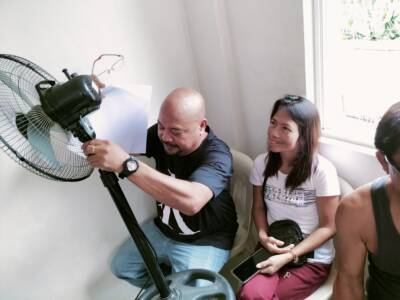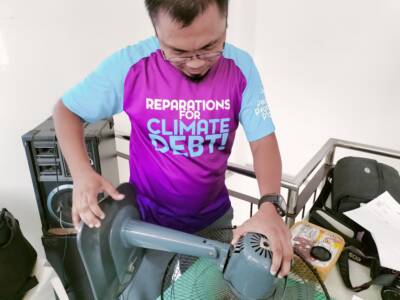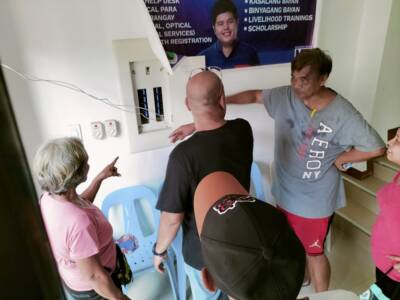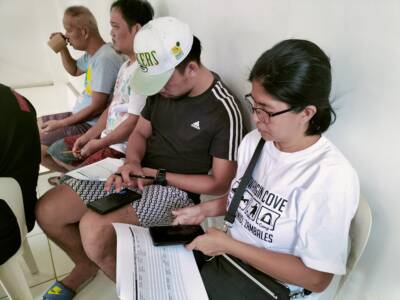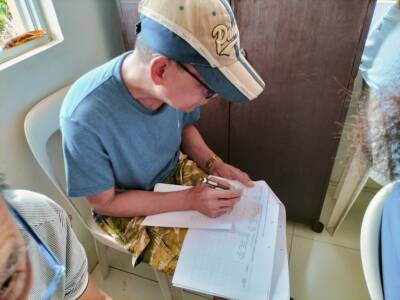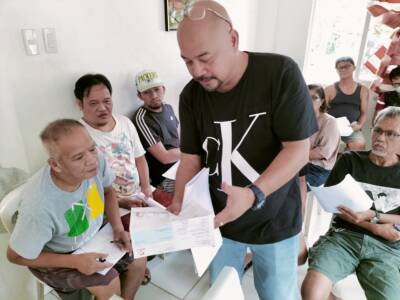350 Pilipinas, Lilok Foundation Inc, Institute for Climate and Sustainable Cities’ RE-Charge Pilipinas and five homeowners associations recently collaborated for a community facility energy needs assessment at Brgy. Commonwealth, Quezon City
The assessment, facilitated by RECharge’s Arturo Tahup, determines the Renewable Energy systems that can be integrated into community facilities such as multi-purpose halls for energy efficiency and conservation
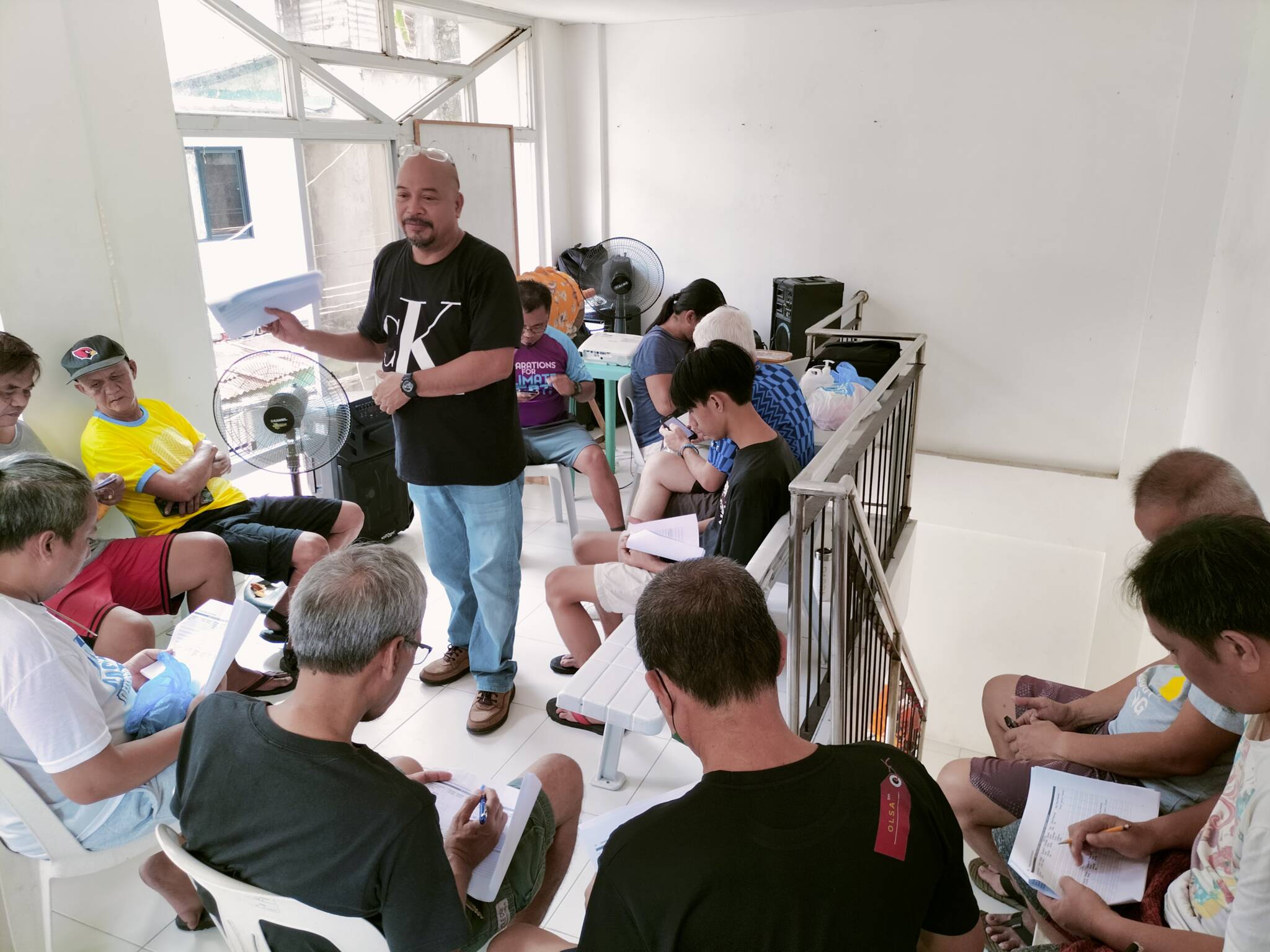
Arturo Tahup of ICSC’s ReCharge discuss community energy asssement needs in Brgy. Commonwealth, Quezon City. Photo: Fread De Mesa
Multi-purpose halls have always been the beating heart of communities, serving as spaces for essential gatherings, social events, mass assemblies, and even as evacuation centers during natural disasters. By powering these facilities with renewable energy, we not only embrace sustainability but also empower communities to save and redirect resources towards their programs and development.
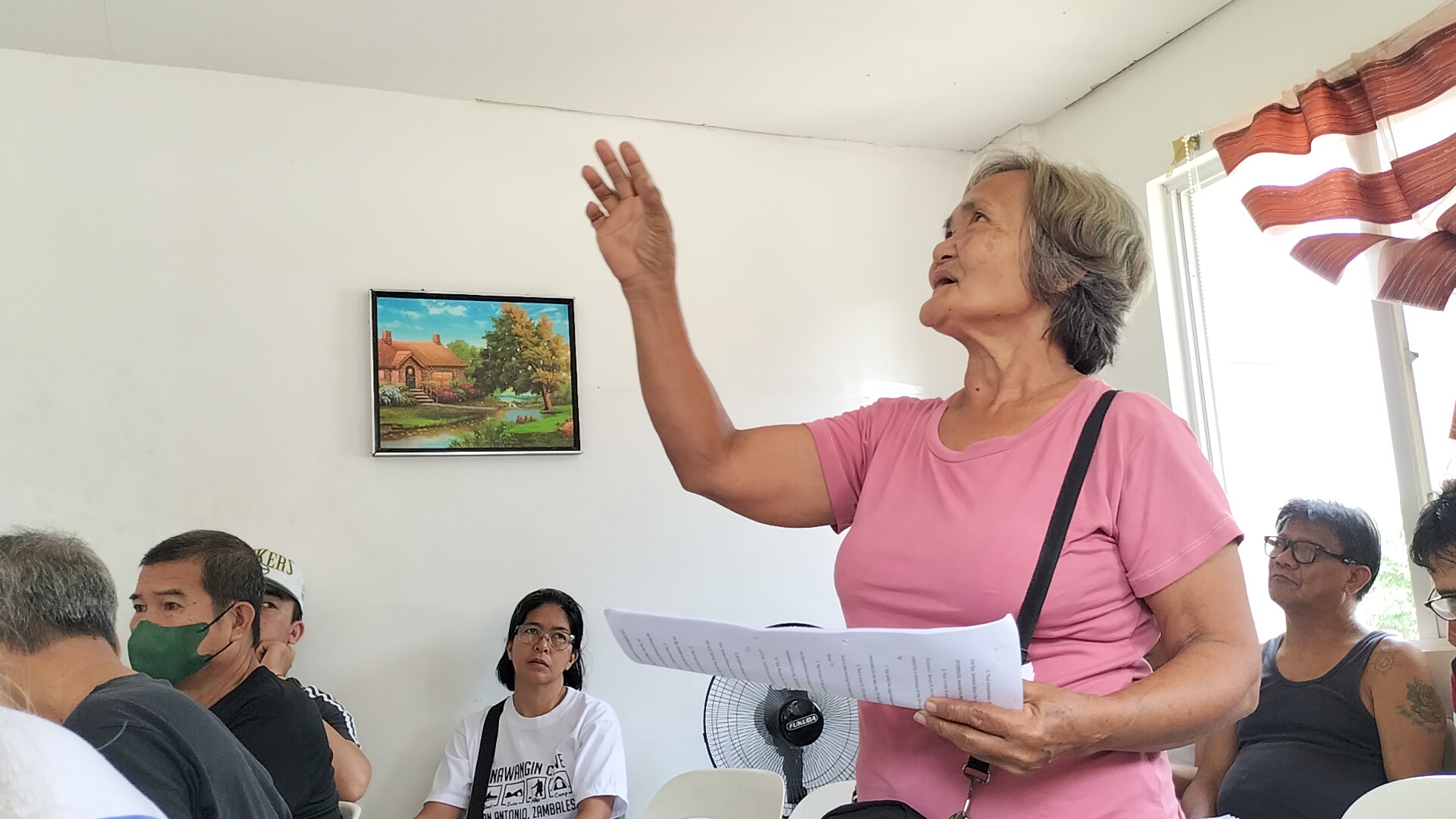
A homeowners association member shared her insights in the energy needs assesment. A total of 5 Home Owners Association (HOA) attended the assessment out of 700 HOAs in the Brgy. Commonwealth, QC Photo: Fread De Mesa
This assessment represents a pivotal step toward tailoring energy solutions to meet the unique needs of the community, with a focus on planning and implementing suitable photovoltaic or solar energy systems within the community halls. Subsequently, communities will take charge of installing and cultivating these energy systems according to their specific requirements.
In this way, we are not just introducing Renewable Energy solutions accessible to the community, but also bolstering the community’s climate resilience. This initiative has the potential to foster economic opportunities and cultivate a culture of sustainable energy practices, addressing the pressing challenges posed by the climate crisis.
Furthermore, the energy needs assessment has opened up possibilities, including extending these green solutions into households. It aims to provide a greener alternative not only for community facilities but also for individual homes
Fread De Mesa, 350 Pilipinas National Coordinator shared his reflections on the community’s energy assessments:
“Ito ay action by doing, inilabas yung mga actual bill ng kuryente ng mga Multi-purpose hall nila tapos nireflect sa kung paano sila nagkokonsumo. Tampok sa usapan na kinakailangang maging aware sa mga pamamaraan ng energy efficiency at conservation lalo mahal, masama at hindi sustainable ang kasalukuyang pinanggagalingan ng supply mula sa grid”
The assesment revolved on the conversation of how communities can access an affordable and clean energy supply, As current conditions of these community facilities have to rely on their neighboring households for energy supply which reuslts to higher electric bills. Instead of saving the resources for community projects or savings, homeowners association’s budget are often used for electricity bills
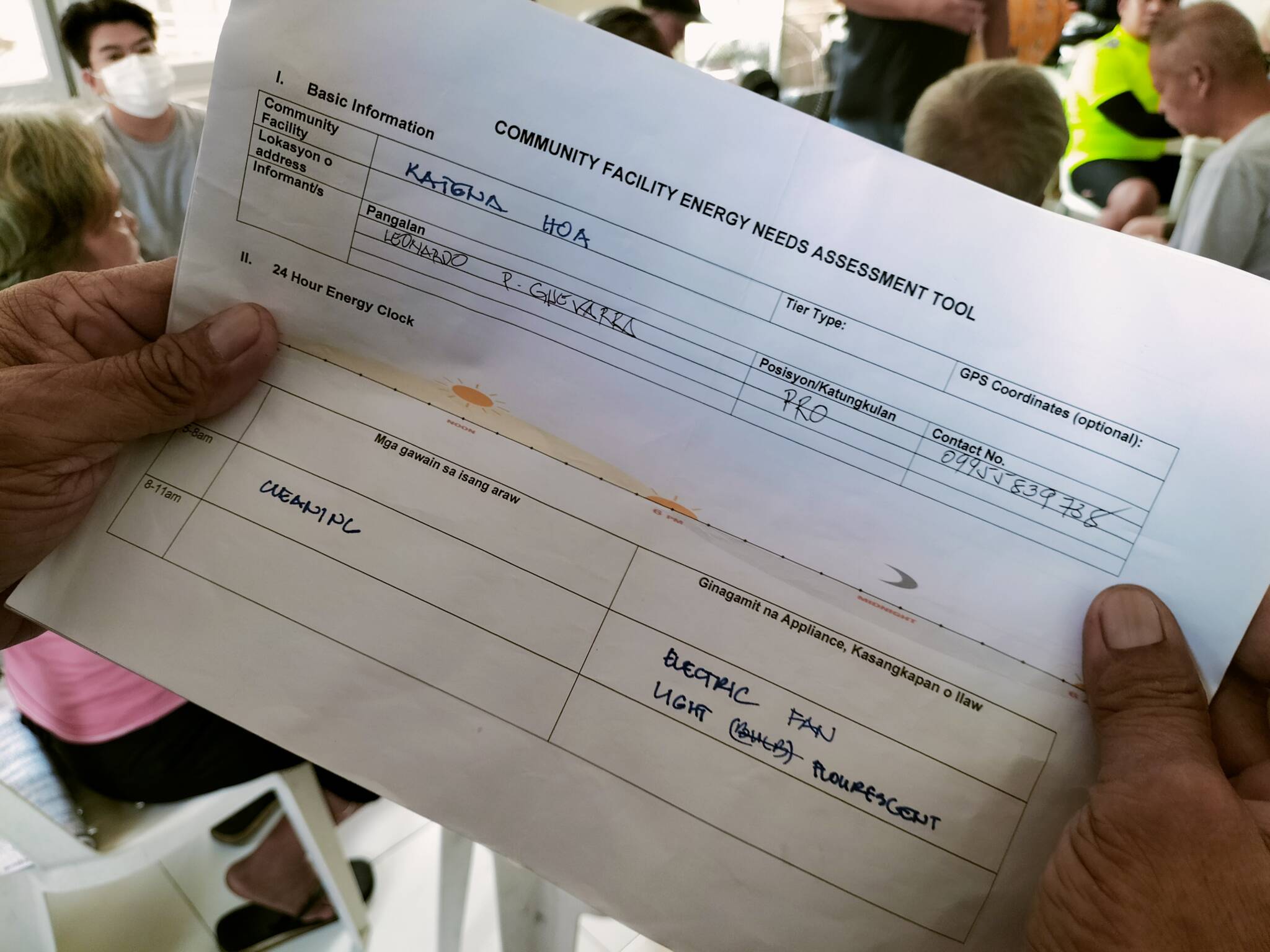
A HOA officer revisits their answers in the community energy needs assessment tool. The tools is designed to note the specific tasks and appliances needed for a specific facility. Photo: Fread De Mesa
Lastly, the energy assessment of the Brgy, Commonwealth that happened were possible due to the collaborations between communities and civil society organizations into increasing the adaptive capacities especially the urban poor communities in the midst of climate induced disasters and ultimately paving the way for a more resilient and sustainable future.

